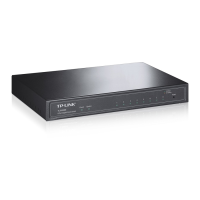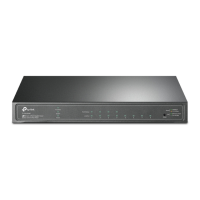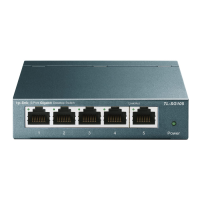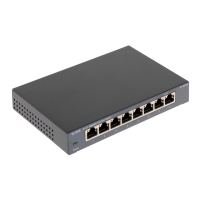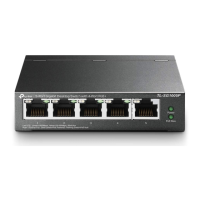5
The following table gives detailed information about the Accessing path, Prompt of each mode and
how to exit the current mode and access the next mode.
Mode Accessing Path Prompt
Logout or Access the next
mode
User EXEC
Mode
Primary mode once it
is connected with the
switch.
TP-LINK>
Use the exit command to disconnect
the switch
Use the enable command to access
Privileged EXEC mode.
Privileged
EXEC Mode
Use the enable
command to enter this
mode from User
EXEC mode.
TP-LINK#
Use the exit command to disconnect
the switch
Enter the disable command to return
to User EXEC mode.
Enter configure command to access
Global Configuration mode.
Global
Configuration
Mode
Use the configure
command to enter this
mode from Privileged
EXEC mode.
TP-LINK(config)#
Use the exit or the end command or
press Ctrl+Z to return to Privileged
EXEC mode.
Use the interface type number
command to access interface
Configuration mode.
Use the vlan database to access
VLAN Configuration mode.
Interface
Configuration
Mode
Use the interface type
number command to
enter this mode from
Global Configuration
mode.
TP-LINK(config-if)#
Use the end command or press Ctrl+Z
to return to Privileged EXEC mode.
Enter exit command to return to Global
Configuration mode.
A port number must be specified in the
interface command.
VLAN
Configuration
Mode
Use the vlan
database command
to enter this mode
from Global
Configuration mode.
TP-LINK(config-vlan)#
Use the end command or press Ctrl+Z
to return to Privileged EXEC mode.
Enter the exit command to return to
Global configuration mode.
Note:
1. The user is automatically in User EXEC Mode after the connection between the PC and the
switch is established by a telnet connection.
2. Each command mode has its own set of specific commands. To configure some commands,
you should access the corresponding command mode firstly.

